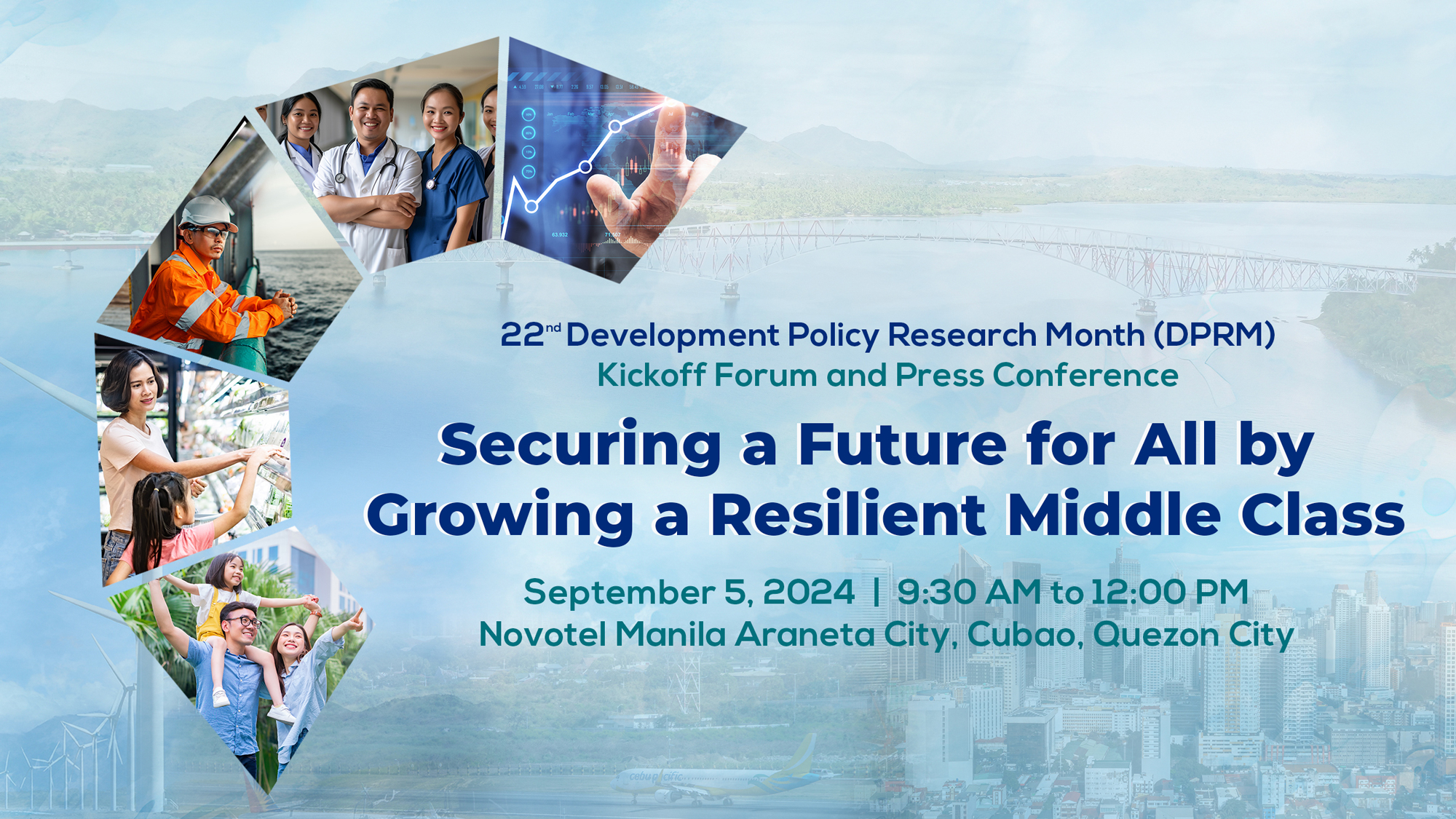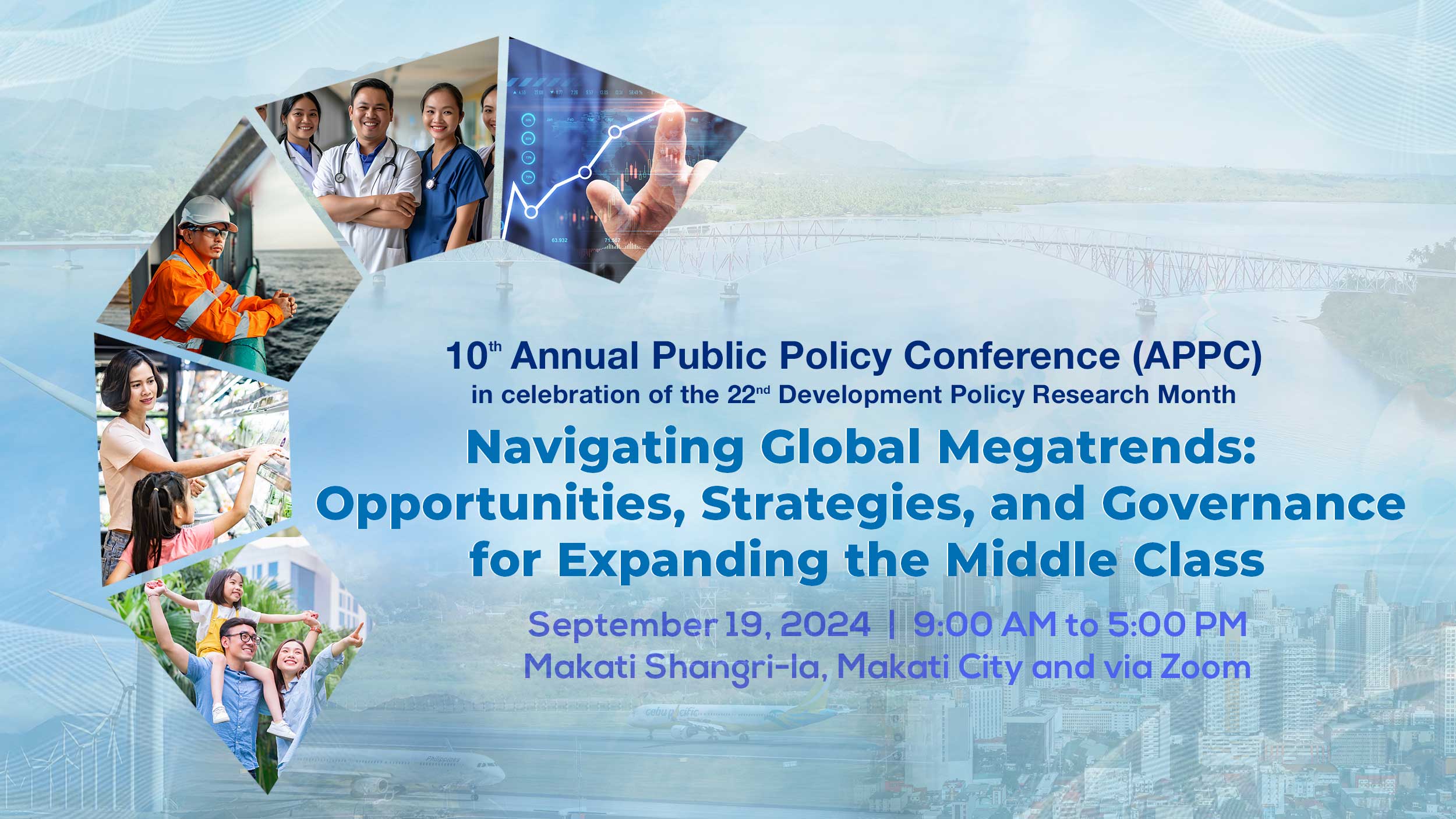IF household incomes were to fall by 20 percent, it may take nearly a quarter of a century for poor Filipinos to reach middle-income status, according to a study released by the Philippine Institute for Development Studies (PIDS).
In a study, titled Poverty, the Middle Class, and Income Distribution amid Covid-19, PIDS Senior Research Fellows Jose Ramon G. Albert, Michael Ralph M. Abrigo, and Francis Mark A. Quimba as well as Research Specialist Jana Flor V. Vizmanos said such could be an indication that the country will miss its long-term vision in 2040.
Under the AmBisyon2040, Filipinos would like to reach middle-income status in 25 years. The data, collected in 2015 and made public in 2016, showed that 79.2 percent of Filipinos wanted a “simple and comfortable life.”
“That’s what the simulation suggests,” Albert told the BusinessMirror on Wednesday. “Unless government has a concrete recovery plan that will put income growths much higher than the 2015-2018 growth.”
Under the worst-case scenario where incomes contract by 20 percent, notwithstanding the financial assistance to the bottom 90 percent of households, the average time it would take for a poor household to reach middle income is 24 years, three years longer than expected on the assumption that incomes rise 2.5 percent annually.
Under the medium-case scenario where there is a 10-percent income reduction in the wake of the Covid-19 pandemic and effective social protection, the average transition time increases, but only by a quarter of a year from the baseline scenario.
The authors estimated that given a V-shaped recovery and a growth rate of real income per capita of 2.5 percent per year, a low-income person transitioning into middle class in approximately 21.2 years if this growth rate in incomes were continuous and uniform across the population.
“For lower growth rates that could happen under a prolonged stress, i.e. if a W-, U- or L-shaped recovery results, then the transition of the low income to middle class will even take much longer, even with the current cash assistance by the national government to most households,” the authors said.
The researchers noted, however, that based on the annualized growth rates of household income per capita in the Philippines among the bottom 40 percent of the population was 1.8 percent between 2012 and 2015, and 3.5 percent between 2015 and 2018.
Based on the authors’ estimates, if household per-capita incomes increases by 0.5 percent a year and a 1-percent gross domestic product (GDP) per-capita growth every year, it will take 119.4 years for low-income households to reach middle-income status.
In contrast, if household per-capita income grows 10 percent annually and GDP per capita grows 20 percent annually, it will take poor households only 5.97 years to transition to middle-income status.
“Prior to onset of Covid-19, incomes grew by around 2.5 percent per year for the bottom 40 percent so if there would be a V-shaped recovery, then the effect of reduced incomes of 10 percent this year with the SAP [Social Amelioration Program] would be to increase transition time of low income to middle class by half a year,” Albert said. “With lower growth, then transition time would be longer.”
In order to help the poor transition to middle-income status, the authors said the government should ensure that the poor are at the center of policy-making.
This is especially the case with the reduction of economic activities caused by Covid-19. This has not only affected the poor’s livelihood but likewise affected many poor individuals and households.
The authors said the poor do not have the access to health care due to high costs, as well as frequent handwashing given their low access to safe water and safe sanitation services.
“These vulnerable groups often have meager savings to cushion them against sustained economic disruptions, and may have even little protection against other related shocks, such as job losses, and food insecurity. Their recovery may be challenging compared to those in higher income groups,” the authors said.
The researchers also said social protection should also be treated as the core of government policy, even in times when there is no pandemic.
They also said the government should also increase its investments in data, including in databases that are interoperable.
The authors also said efforts to strengthen digitalization efforts should be increased as well as improving access to affordable technology and internet services.
In a study, titled Poverty, the Middle Class, and Income Distribution amid Covid-19, PIDS Senior Research Fellows Jose Ramon G. Albert, Michael Ralph M. Abrigo, and Francis Mark A. Quimba as well as Research Specialist Jana Flor V. Vizmanos said such could be an indication that the country will miss its long-term vision in 2040.
Under the AmBisyon2040, Filipinos would like to reach middle-income status in 25 years. The data, collected in 2015 and made public in 2016, showed that 79.2 percent of Filipinos wanted a “simple and comfortable life.”
“That’s what the simulation suggests,” Albert told the BusinessMirror on Wednesday. “Unless government has a concrete recovery plan that will put income growths much higher than the 2015-2018 growth.”
Under the worst-case scenario where incomes contract by 20 percent, notwithstanding the financial assistance to the bottom 90 percent of households, the average time it would take for a poor household to reach middle income is 24 years, three years longer than expected on the assumption that incomes rise 2.5 percent annually.
Under the medium-case scenario where there is a 10-percent income reduction in the wake of the Covid-19 pandemic and effective social protection, the average transition time increases, but only by a quarter of a year from the baseline scenario.
The authors estimated that given a V-shaped recovery and a growth rate of real income per capita of 2.5 percent per year, a low-income person transitioning into middle class in approximately 21.2 years if this growth rate in incomes were continuous and uniform across the population.
“For lower growth rates that could happen under a prolonged stress, i.e. if a W-, U- or L-shaped recovery results, then the transition of the low income to middle class will even take much longer, even with the current cash assistance by the national government to most households,” the authors said.
The researchers noted, however, that based on the annualized growth rates of household income per capita in the Philippines among the bottom 40 percent of the population was 1.8 percent between 2012 and 2015, and 3.5 percent between 2015 and 2018.
Based on the authors’ estimates, if household per-capita incomes increases by 0.5 percent a year and a 1-percent gross domestic product (GDP) per-capita growth every year, it will take 119.4 years for low-income households to reach middle-income status.
In contrast, if household per-capita income grows 10 percent annually and GDP per capita grows 20 percent annually, it will take poor households only 5.97 years to transition to middle-income status.
“Prior to onset of Covid-19, incomes grew by around 2.5 percent per year for the bottom 40 percent so if there would be a V-shaped recovery, then the effect of reduced incomes of 10 percent this year with the SAP [Social Amelioration Program] would be to increase transition time of low income to middle class by half a year,” Albert said. “With lower growth, then transition time would be longer.”
In order to help the poor transition to middle-income status, the authors said the government should ensure that the poor are at the center of policy-making.
This is especially the case with the reduction of economic activities caused by Covid-19. This has not only affected the poor’s livelihood but likewise affected many poor individuals and households.
The authors said the poor do not have the access to health care due to high costs, as well as frequent handwashing given their low access to safe water and safe sanitation services.
“These vulnerable groups often have meager savings to cushion them against sustained economic disruptions, and may have even little protection against other related shocks, such as job losses, and food insecurity. Their recovery may be challenging compared to those in higher income groups,” the authors said.
The researchers also said social protection should also be treated as the core of government policy, even in times when there is no pandemic.
They also said the government should also increase its investments in data, including in databases that are interoperable.
The authors also said efforts to strengthen digitalization efforts should be increased as well as improving access to affordable technology and internet services.












